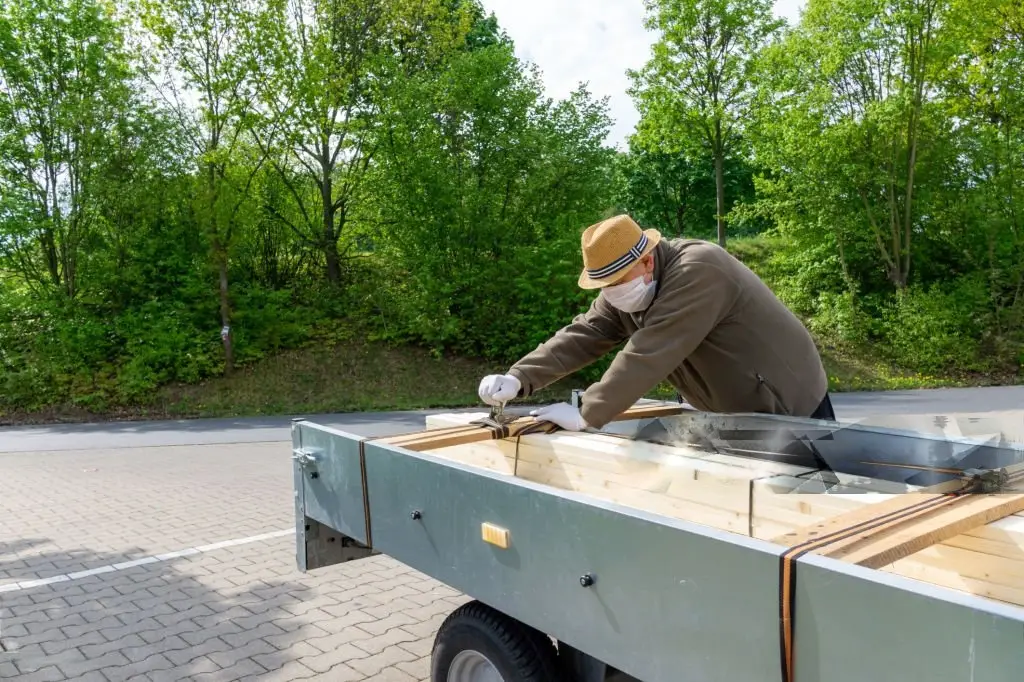RVs are a popular choice for travel enthusiasts, offering comfort and convenience on the road. However, to ensure a smooth and enjoyable journey, proper leveling of the RV is crucial. One of the essential tools for leveling an RV is the leveling ramp. In this article, we’ll explore how to make RV leveling ramps, whether you’re opting for a DIY approach or considering pre-made options.
1. Introduction to RV Leveling Ramps
RV leveling ramps are specially designed platforms that help elevate one side of the RV to achieve a level position. These ramps come in various shapes, sizes, and materials, catering to different RV types and weight capacities.
2. Understanding the Importance of Leveling Your RV
Leveling your RV is essential for several reasons. Firstly, it ensures stability when parked, preventing the RV from rocking or swaying, especially on uneven terrain. Secondly, it helps distribute weight evenly, which is crucial for the proper functioning of appliances like refrigerators and air conditioners. Additionally, leveling the RV enhances comfort inside by ensuring that doors and windows operate smoothly.
3. Factors to Consider Before Making RV Leveling Ramps
Before diving into making RV leveling ramps, it’s essential to consider various factors to ensure they meet your needs effectively.
– Weight Capacity
RV leveling ramps should be able to support the weight of your vehicle. Consider the Gross Vehicle Weight Rating (GVWR) of your RV to determine the appropriate weight capacity for the ramps.
– Durability
Choose materials that can withstand the weight of the RV and the outdoor elements. Common materials for DIY ramps include wood, plastic, and composite materials.
– Ease of Use
The ramps should be easy to set up and use, ensuring a hassle-free leveling process. Opt for designs that are user-friendly and require minimal effort to deploy.
– Compatibility with RV Type
Ensure that the ramps are compatible with your RV type, whether it’s a motorhome, travel trailer, or fifth wheel. Consider factors like tire width and spacing when designing the ramps.
4. DIY vs. Pre-made RV Leveling Ramps
Pros and Cons of DIY Ramps
Certainly! Here’s the pros and cons of DIY ramps in English:
Pros:
1. Cost-effective: DIY ramps are generally more budget-friendly compared to purchasing pre-made ones, as you can often use materials that are readily available or repurpose items you already have.
2. Customizable to fit specific RV requirements: When making your own ramps, you have the flexibility to customize them according to the specifications and dimensions of your RV. This ensures a perfect fit and optimal performance.
3. Satisfaction of building something yourself: There’s a sense of accomplishment and satisfaction that comes with building something with your own hands. Making DIY ramps allows you to take pride in your creation and enhances the overall experience of RV ownership.
Cons:
1. Time-consuming: DIY projects can be time-intensive, especially if you’re new to woodworking or construction. From planning and gathering materials to cutting and assembling, making DIY ramps requires a significant time investment.
2. Requires woodworking or construction skills: Building ramps from scratch necessitates a certain level of skill and proficiency in woodworking or construction techniques. Without proper knowledge and experience, the quality and effectiveness of the ramps may be compromised.
3. May lack professional finish and durability: DIY ramps may not have the same level of professional finish and durability as pre-made ones. Factors like the quality of materials used and construction techniques employed can affect the longevity and performance of the ramps over time.
– Pros and Cons of Pre-made Ramps
Pros:
1. Convenient and ready-to-use: Pre-made ramps are designed for immediate use, saving you time and effort compared to DIY options. They come ready to deploy, eliminating the need for assembly or customization.
2. Professionally designed for optimal performance: Pre-made ramps are engineered by professionals with expertise in RV accessories. They are designed to meet industry standards and provide optimal performance in leveling your RV.
3. Durable and long-lasting: Pre-made ramps are constructed using high-quality materials and manufacturing processes, ensuring durability and longevity. They are built to withstand the weight of RVs and the rigors of outdoor use.
Cons:
1. Higher cost compared to DIY options: Pre-made ramps typically come with a higher price tag compared to DIY alternatives. The cost includes the expenses associated with professional design, manufacturing, and marketing.
2. Limited customization options: While pre-made ramps offer convenience, they may lack the flexibility for customization according to your specific RV requirements. You may be limited to the sizes and designs available in the market.
5. Materials and Tools Needed for DIY RV Leveling Ramps
To embark on a DIY project for RV leveling ramps, gather the following materials and tools:
- Wood planks or composite boards
- Saw (circular saw or jigsaw)
- Measuring tape
- Screws or nails
- Drill
- Sandpaper
- Paint or sealant (optional)
6. Step-by-Step Guide to Making DIY RV Leveling Ramps

Now, let’s delve into the process of making DIY RV leveling ramps.
– Design Planning
Begin by sketching out the design of the ramps, considering the dimensions and slope needed for effective leveling.
– Gathering Materials
Purchase or gather the necessary materials and tools as per your design requirements.
– Construction Process
Cut the wood or composite boards to the desired dimensions using a saw. Assemble the ramps by attaching the planks together with screws or nails.
– Testing and Adjustments
Test the ramps by placing them under the RV wheels and driving onto them. Make any necessary adjustments to ensure proper leveling.
7. Safety Tips When Using RV Leveling Ramps
- Always chock the wheels on the opposite side of the ramps to prevent the RV from rolling.
- Inspect the ramps for any signs of damage or wear before each use.
- Use leveling blocks or pads under the ramps for added stability on soft or uneven terrain.
8. Maintenance and Storage Tips for RV Leveling Ramps
To ensure the longevity and effectiveness of your RV leveling ramps, it’s important to follow proper maintenance and storage practices:
1. Clean the ramps regularly: Dirt, debris, and road grime can accumulate on the ramps over time, affecting their performance. Regularly clean the ramps with water and a mild detergent to remove any buildup. Pay attention to the grooves and crevices where dirt tends to accumulate.
2. Store the ramps in a dry, protected area: When not in use, store the ramps in a dry, protected area to shield them from the elements. Exposure to moisture, sunlight, and extreme temperatures can cause damage and deterioration. Consider storing the ramps in a garage, shed, or storage compartment on your RV.
3. Check for signs of wear or damage: Periodically inspect the ramps for any signs of wear, damage, or deterioration. Look for cracks, warping, or splintering that could compromise the structural integrity of the ramps. If any damage is detected, repair or replace the ramps as needed to ensure safe and effective use.
9. Conclusion
RV leveling ramps are essential tools for maintaining stability and comfort while traveling in an RV. Whether you choose to make your own ramps or purchase pre-made ones, proper leveling ensures a safe and enjoyable journey. By considering factors like weight capacity, durability, and ease of use, you can select the right ramps to meet your needs effectively.



